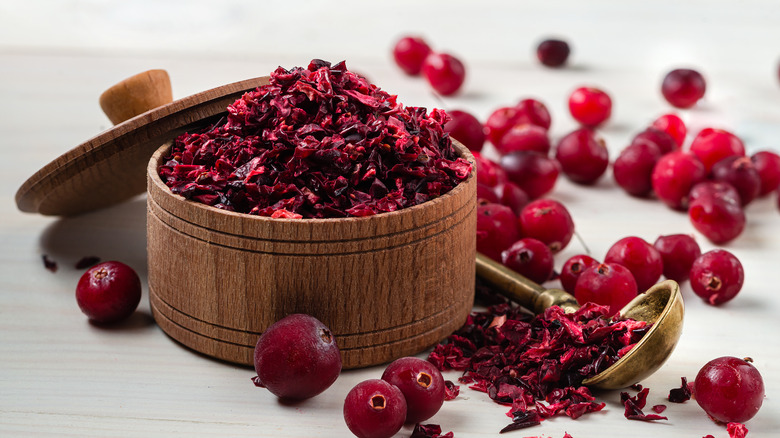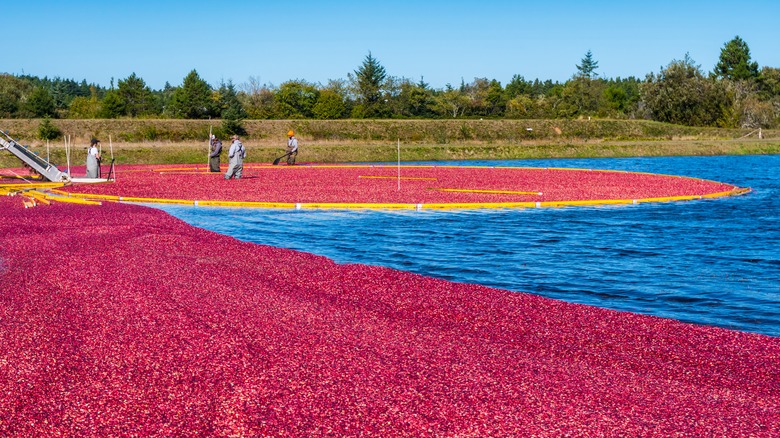This Country Produces More Cranberries Than Any Other In The World
Cranberry farming provides one of the most colorful and eclectic harvest seasons, washing the landscape in brilliant crimson-red hues. Workers clad in thigh-high boots wade through cranberry bogs or marshes, raking corralled berries as they bob playfully in the water, buoyed by four air chambers inside each little berry, explains US Cranberries. Elaborate systems of natural clay, sand, peat, gravel, and rocks, originally created by glaciers in many areas, foster the perfect ecosystem for the zingy tart berries.
The pageantry of autumn harvest isn't the only thing setting cranberries apart from other fruits. They happen to be in the handful of "super food" fruits packing a nutritious wallop of vitamin C, fiber, and phytonutrients, potentially improving circulation and lowering risks for health heart and cancer, notes Mayo Clinic. Cranberries also harbor more phenol antioxidants than 20 other common fruits, per a study cited by WebMD.
With all that goodness, it's surprising to learn that cranberry production clusters primarily in a small handful of countries. Tight-knit growing communities and extensive webs of cooperative farmers add to the mystique of this holiday-favorite fruit while one country in particular leads production by a long shot.
Native to North America
If you guessed that somewhere in North America leads for concentrated cranberry cultivation, you got it right. The United States leads the pack in "crane berry" production; an earlier name for the berry due to its shape resembling the head and beak of a crane, according to Ocean Spray. Insider explains that the Ocean Spray company has been an agricultural cooperative since 1933, managing 700 farming families across America, Canada, and Chile who collectively own the brand and harvest 220 billion cranberries annually. That equates to about 88 million cans of cranberry sauce and 223 million bottles of cranberry juice.
Cranberry farming flourishes in five states, per US Cranberries, with Wisconsin producing 61% of U.S. cranberries, Massachusetts at 26%, and New Jersey, Washington State, and Oregon jointly providing 13%. On the world stage, the United States provides about half of all of the world's cranberry production, followed by Canada, and then Chile.
It's no wonder that cranberries thrive in the United States, since they're only one of three fruits native to North America, according to Ocean Spray. Indigenous Native Americans first cultivated cranberries, using them as survival food, in poultices to extract poison, and as a dye for clothing, bedding, and floor coverings. Now, Americans consume 400 million pounds of cranberries annually, and a lineup of North American cranberries would reportedly string from Boston to Los Angles 565 times (per Ocean Spray).

